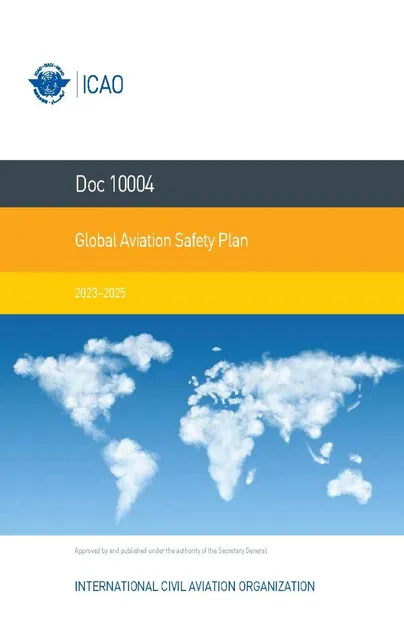The South American Safety Plan (SAMSP) provides strategic guidance for managing safety for each South American state. Working from this plan, States have agreed to update their national aviation safety plans (NASPs), which in turn outline the actions to be taken to mitigate high-risk categories of accidents and serious incidents as identified in each state’s national risk picture. For each of the identified issues, safety enhancement initiatives (SEIs) must be developed and implemented.
 “The South American Safety Plan is the soul and heart of safety in our region,” said Marcelo Ureña, ICAO’s Flight Safety Officer for the region. “It contains within it the expression of our tireless dedication to saving as many human lives as possible in South America, and around the world.”
“The South American Safety Plan is the soul and heart of safety in our region,” said Marcelo Ureña, ICAO’s Flight Safety Officer for the region. “It contains within it the expression of our tireless dedication to saving as many human lives as possible in South America, and around the world.”
Safety deficiencies identified at the national level must be addressed in line with the global and regional objectives and targets of the Global Aviation Safety Plan (GASP) and SAMSP, the implementation of the updated NASPs will enhance safety in each State, at the regional level, and worldwide.
“We are taking our first steps, and we know that it will require a lot of work, dedication, and resources to implement our updated national plans,” Ureña remarked. “However, what should never be lacking is our motivation, faith, hope, attitude, and dedication to achieve the established objectives and targets.”
When developing the NASPs, the following safety objectives should be addressed in a national context:
- Continuously reducing safety risks, which involves mitigating high-risk categories of occurrences (accidents, serious incidents, and incidents) across all aviation segments in each State.
- Strengthening States´ safety oversight capabilities, resulting in continuous improvement in the effective implementation of the eight (8) critical elements of a safety oversight system.
- Implementing effective State safety programmes (SSPs), including the effective implementation of safety management systems (SMS) by service providers.
- Increasing collaboration at the regional level, calling for technical assistance in case states fail to achieve planned objectives and targets.
- Expanding the utilization of industry programs and safety information exchange networks, urging the industry to make greater contributions to the development and implementation of regional and national plans, as well as safety data collection and processing systems (SDCPS) or safety information exchange networks.
- Ensuring the availability of appropriate infrastructure to support safe operations, promoting a growing trend of States with air navigation and aerodrome infrastructure that complies with relevant Annexes to the Chicago Convention.
 “We are confident in the capabilities and skills of our States to face and overcome this great challenge,” Ureña declared, pointing to the reduction of accidents, serious incidents, and incidents and the continuous improvement in effective implementation of ICAO priorities such as of State Safety Programmes (SSP) and Safety Management Systems (SMS).
“We are confident in the capabilities and skills of our States to face and overcome this great challenge,” Ureña declared, pointing to the reduction of accidents, serious incidents, and incidents and the continuous improvement in effective implementation of ICAO priorities such as of State Safety Programmes (SSP) and Safety Management Systems (SMS).
Looking forward, he highlighted that many of the objectives are already being addressed. “Emerging operations such as unmanned aviation will heighten the safety challenge entrusted to us by our member States,” Ureña noted. “However, the momentum is in the right direction and increasing: We will achieve it and prevail!”
In the area of training, ICAO developed a National Aviation Safety Plan online course that provides an overview and practice with the planning and implementation of a national aviation safety plan (NASP), in alignment with the ICAO Global Aviation Safety Plan (GASP) and the regional aviation safety plan (RASP).
Expanding this assistance even wider, ICAO has developed Implementation Packages (iPacks) that bundle standardized guidance material, training, tools and expert support to facilitate the implementation of ICAO provisions for States, aviation service providers, supply chain stakeholders, and their personnel. The iPack Developing a National Aviation Safety Plan (NASP) is a self-contained package that can facilitate and guide Civil Aviation Authorities (CAAs) and Regional Safety Oversight Organizations (RSOOs) in the development of a National Aviation Safety Plan (NASP) or a Regional Aviation Safety Plan (RASP), respectively. It includes relevant documentation, tools and an online course to facilitate the development and implementation of a NASP or RASP. A dedicated subject matter expert will work remotely with the CAA or RSOO, providing guidance in their implementation efforts to achieve the objectives of the iPack. The level of progress made against each iPack objective is dependent on the availability of CAA/RSOO resources to perform the work.
The goal of this iPack is to facilitate and guide CAAs in developing a NASP that contains a strategy that best addresses their safety issues, through training and detailed guidance. It emphasizes the importance of including key elements in a NASP; the development of a clear action plan (i.e. a roadmap); and collaboration among stakeholders internally in the State, regionally and with industry. The same process is applied to the development of a RASP.

